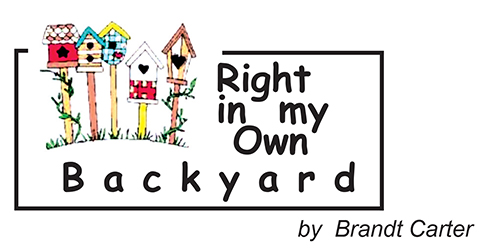
|
Broad Ripple Random Ripplings

The news from Broad Ripple
Brought to you by The Broad Ripple Gazette
(Delivering the news since 2004, every two weeks)

|
| Brought to you by: |

|

|

|

|

|

|
Converted from paper version of the Broad Ripple Gazette (v05n20)
Right in my Own Backyard - Attracting the American Goldfinch - by Brandt Carter
posted: Sept. 26, 2008

Attracting the American Goldfinch
Whether you call the little yellow bird in your yard a canary, a finch, or simply little yellow bird, the American Goldfinch is a delight to attract to a feeder. You may see them in abundance during late summer when flowers have set their seeds as these feathered friends dine on daisies, cone flowers, sunflowers, cosmos, and zinnias. They can be seen at the edge of a puddle taking a cooling bath after a rain. You may also spot them flying in an undulating pattern that takes the form of a wave-shaped path.
Did you know?
- Goldfinches are frequently found in weedy fields and visiting yard feeders. They are fond of wild thistles and seeds, using the plant down to line their nests.
- The male is yellow with a black cap from late spring to early fall when he changes to winter plumage (a drab olive green much like the female); this involves shedding breeding plumage by a complete molt of body feathers. Goldfinches, having stayed here all winter, undergo a second molt in the spring.
- The American Goldfinch nests late, starting in late June or early July when most other songbirds have finished breeding. This is because preferred nesting materials and abundant seeds for feeding young are more available as the growing season progresses.
- A number of female goldfinches switch mates after their first broods. The first male tends to the fledglings while the female goes on to start another brood with a different male.
- If they stop eating at your feeder, check the freshness of the seed and also check to see that there is no mold in the feeder. These birds are very particular!
Because American Goldfinches are granivores (seed eaters), they are great guests at backyard birdfeeders. The important proviso is that they eat specific seed, which requires specially designed feeders. One specialized finch feeder is the upside down feeder. Because goldfinches can grab on and eat upside down, this feeder accommodates only them so that other birds cannot eat from it. Another great feeder is the Mad Mountain Thistle Sack, which allows multiple goldfinches to cling to the sack, eating out of small ports. Both feeders are to be filled with Nyjer seed. Called "thistle" in previous years, this is not related to the common or wild thistle but comes from the plant "Guizotia abyssinica." The small, black seed is more expensive than sunflower seed because it is imported, usually from Ethiopia or India, and must be heat-sterilized before entry into this country. Special seeds, special feeders bring colorful finches to your yard.
If you decide to attract goldfinches, put out a feeder with Nyjer seed. Word seems to spread quickly among goldfinches that there is Nyjer in a yard. They will abandon all other sources of food and head straight for your feeder. You will have hours of enjoyment compliments of this yellow bird.
Brandt Carter, artist, herbalist, and naturalist, owns Backyard Birds at 2374 E. 54th Street. Visit her web site www.feedbackyardbirds.com. Email your bird questions to Brandt@BroadRippleGazette.com
brandt@broadripplegazette.com

|

|

|
| Brought to you by: |

|

|

|
| Brought to you by: |

|

|

|
| Brought to you by: |

|

|

|
| Brought to you by: |


